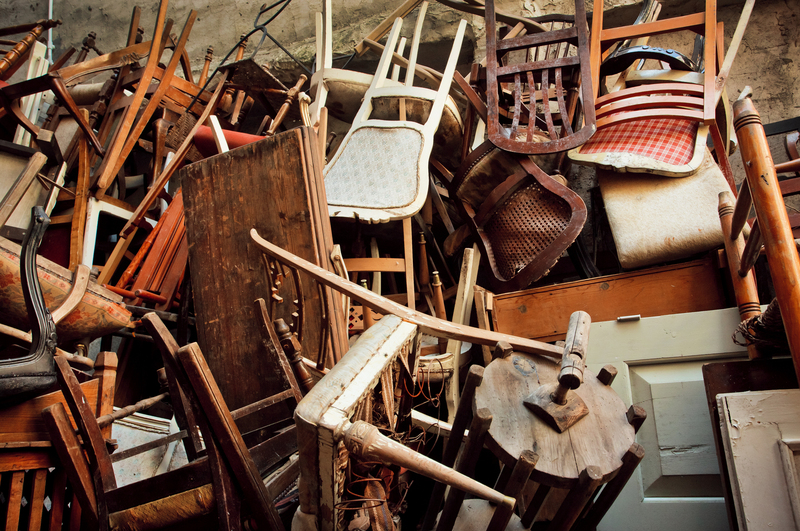Piano Relocation 101: Expert Tips on Avoiding DIY Mishaps
Posted on 17/06/2025
Piano Relocation 101: Expert Tips on Avoiding DIY Mishaps
Pianos are majestic, highly valuable instruments that bring music to countless homes. But when it's time to move, relocating a piano is anything but simple. Many homeowners are tempted to save money by attempting a DIY piano move, only to discover the risks, complexities, and unexpected costs involved. In this comprehensive guide, we'll explore the essential strategies to relocate your piano safely, explain why piano relocation is best left to experts, and how to avoid common mistakes that could damage your precious instrument or property.
Understanding Piano Relocation: Why Is It So Complicated?
Pianos vary greatly in shape, size, and weight--from upright pianos that weigh between 300-500 pounds to grand pianos tipping the scales at over 1,000 pounds. The intricate inner mechanisms, sensitive wood components, and polished finishes can be irreparably damaged by improper handling.
- Complex structure: Over 10,000 moving parts are inside an average piano.
- Delicate surfaces: Fancy finishes are highly prone to scratches and dents.
- Weight distribution: A poorly supported move can warp the piano frame.
Damage not only affects appearance and musical quality but also has substantial financial and sentimental consequences. That's why mastering the basics of piano relocation is so important.

DIY Piano Moving Mishaps: What Could Go Wrong?
Homeowners often underestimate the risks associated with piano moving. Without the correct preparation or knowledge, you may encounter:
- Personal injury: Pianos are heavy and awkward -- improper lifting can cause sprained muscles, broken bones, or more severe accidents.
- Property damage: Floors get scratched, walls gouged, and stairs cracked if you lose control of the weight.
- Instrument damage: Even a minor bump or jolt can harm keys, pedals, soundboard, or internal strings, requiring professional repairs.
- Voided warranties: Many brands require professional piano movers to maintain your warranty coverage.
- Insurance issues: Regular home movers often don't cover high-value items like pianos.
Attempting a DIY piano relocation may seem like a way to save money, but the long-term costs of mistakes can far outweigh the price of hiring professionals.
Should You Move Your Piano Yourself?
Before tackling a piano move on your own, ask yourself these crucial questions:
- Do you have enough physically strong helpers? A safe move often requires four or more adults.
- Are you equipped with specialized piano moving tools? This includes piano dollies, straps, and padding.
- Can you navigate stairs, tight doorways, or sharp corners?
- Is your floor plan free of obstacles?
- Are you willing to risk injury or damage to save money?
These realities demonstrate why most people should avoid DIY piano relocation and instead rely on professionals experienced in moving instruments safely and efficiently.
Expert Tips for Safe Piano Relocation
If you're determined to relocate a piano yourself, or just want to better understand the process before hiring a professional piano moving service, follow these expert tips to minimize mishaps:
1. Plan Your Path with Care
- Measure Everything: Carefully measure your piano, doors, hallways, and stairs to ensure there is sufficient clearance. Remember, pianos cannot be angled much without risking mechanical damage.
- Clear Obstacles: Remove all rugs, furniture, and tripping hazards from your planned route before the move.
- Rehearse the Move: Walk through each step with your helpers before touching the piano.
2. Gather Essential Piano Moving Equipment
Never attempt to move a piano using only household tools. At a minimum, you'll need:
- Piano dolly or skid board (specific to upright or grand pianos)
- Heavy-duty furniture straps
- Thick moving blankets and padding
- Cushioned corner protectors
- Work gloves with a strong grip
- Protective floor runners or plywood sheets for delicate floors
3. Disassemble What You Can
- Remove legs, pedals, and music stands (grand pianos especially).
- Secure the keyboard lid with tape or straps to prevent it from opening.
- Label all hardware and parts for reassembly later.
4. Protect the Piano's Finish and Interior
- Wrap every surface with moving blankets, fixed securely with tape or straps (never place tape directly on piano surfaces).
- Pay extra attention to corners and protrusions, which are most liable to impact damage.
5. Lift and Move with Proper Technique
- Use your legs--not your back--to avoid strain or injury.
- Keep the piano upright (especially for upright models), to protect the soundboard.
- Coordinate movements: Count down and communicate clearly with all helpers at each phase.
- Take breaks as needed to prevent fatigue-induced mistakes.
6. Secure the Piano During Transport
- Use a moving truck with a lift-gate if possible; ramps can be risky for such heavy, unbalanced loads.
- Keep the piano restrained with straps attached to anchor points, so it cannot shift during transit.
- Never set objects on top of the piano while moving.
Why Hire Professional Piano Movers?
While in theory, a careful, well-prepared team can move a piano, the risks almost always outweigh the rewards. Professional piano moving services offer extensive advantages that DIY efforts simply can't match.
- Specialized expertise: Pros understand the nuances of weight distribution and instrument anatomy.
- Right equipment: Professional piano transporters have dollies, ramps, and crating systems designed for every model.
- Efficient logistics: Experienced teams plan the route, coordinate helpers, and navigate obstacles with ease.
- Insurance coverage: Reputable piano movers are insured for accidental damage or injuries.
- Faster, stress-free process: Relocation experts minimize downtime for your home and your instrument.
Still, it's critical to research your piano moving company thoroughly. Look for online reviews, ask about their insurance, and request a written estimate before agreeing to any work.
Frequently Asked Questions on Piano Relocation
Is it more difficult to move a grand piano versus an upright?
Absolutely. Grand pianos must be partially disassembled, placed on special skid boards, and often require a large team to maneuver, especially in tight spaces or on stairs. Upright pianos are somewhat easier, but still very heavy and risky for non-professionals.
How much does professional piano moving cost?
Prices vary based on:
- Type and size of piano
- Distance and complexity (stairs, narrow spaces, city vs. suburban moves, etc.)
- Insurance and additional services like climate-controlled transport
Will moving my piano affect its tuning?
Yes. Even skilled movers can't prevent tuning changes during transport--temperature, humidity shifts, and jostling all affect string tension. Plan a professional tuning session about 2-3 weeks after your relocation.
Is climate control important when moving a piano?
Absolutely--pianos are extremely sensitive to rapid temperature and humidity fluctuations. If possible, opt for climate-controlled trucks for long-distance or cross-season moves.
What about moving old or antique pianos?
Antique and heirloom pianos require even more specialized care. Discuss preservation strategies with your piano mover, who may use tailored padding, custom crating, or specific humidity controls.

Final Thoughts: Make Your Piano Relocation Stress-Free
Relocating a piano, whether it's a beloved family upright or a concert grand, demands much more than brute strength. Piano moving is a detailed balance of knowledge, the right tools, and experience. While DIY moves may seem appealing, the risks--personal, financial, and musical--can be monumental.
If you want your instrument to arrive safely and sounding as beautiful as ever, invest in reputable, expert piano relocation services. Not only will you protect your piano and your home, but you'll also keep your musical dreams alive for years to come.
Quick Piano Relocation Checklist:
- Measure spaces and the piano accurately
- Enlist enough strong helpers
- Rent or purchase professional piano moving equipment
- Disassemble safely and clearly label parts
- Protect every surface with ample padding
- Plan your route and rehearse with your team
- Secure the piano during transport
- Hire a professional tuner after the move
- Consider professionals for long-distance, large, or valuable pianos
Let your next piano relocation be a harmonious one-- prepare wisely, know your limits, and call in the experts to avoid DIY mishaps.



